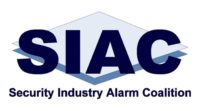Two U.S. cities announced new non-response policies for unverified alarms in 2011. The Detroit Police Department enacted its policy in August and the San Jose, Calif. PD, followed by announcing a very similar plan a few days before Christmas. As law enforcement budgets are cut across the country and many look to reduce false alarm dispatches to boost efficiency, California and Michigan alarm companies are not the only ones watching these policies.
San Jose is the newest city to employ a non-response protocol for unverified alarms. And alarm companies operating in the area are still reeling from the break-neck speed at which the decision was made and implemented by the city’s law enforcement officials. The SJPD informed citizens and alarm companies on Dec. 21, 2011 that effective Jan. 1, 2012, the department would not respond to residential or commercial alarms where the monitoring station calling for dispatch did not have positive confirmation that a crime was in progress or had already occurred.
The SJPD described a verified alarm as one accompanied by either an eyewitness (a guard or alarm company-affiliated personnel or a property owner, for example) account from the scene, or by remote video or audio footage reviewed by the monitoring company. The Department does state on its website (http://www.sjpd.org/records/Verified_Response.html) that it will continue to respond to human-activated panic, duress and robbery alarms. The Detroit PD has a similar concept of a verified alarm. But neither agency has official language admitting alarms verified through enhanced call verification (ECV).
Jerry Lenander, executive director of the California Alarm Association (CAA), commented that San Jose residents had very little time to prepare for the new policy. “The key issue is that it was very short notice that they were not going to respond to alarms. It just left the business owners and homeowners in the lurch. All we really wanted then was some kind of extension to allow the business owners and homeowners to make arrangements — do an assessment and secure their property.”
Jon Sargent, Industry/Law Enforcement Liaison for SIAC, told SDM that SIAC spent several months working with the SJPD, starting in April 2011, sharing SIAC’s false alarm reduction model (centered on ECV and a fine schedule for frequent false alarms) and the positive results garnered in cities that implemented it. The SJPD does cite research as a basis for its new policy. According to the Department, 98 percent of the alarms police responded to in 2008 were false, with only 113 resulting in police reports and two leading to arrests. Sargent and Lenander both pointed out the SJPD used 4-year-old research that dates back before ECV hit its stride.
Alarm companies affected by the new non-response policy will come together at a CAA Silicon Valley local chapter meeting on Feb. 1 to discuss the issue, how their businesses have been affected, and best practices to continue providing their customers with valuable services.
Due to the sudden policy change, local companies have had to quickly adapt and Lenander says it’s critical that everyone is on the same page. “There’s confusion now as to what the policy is and what [the Police] are doing,” he said. “And what alarm companies and central stations are supposed to do. Do you dispatch? Do you not dispatch? What do you do?”
Sargent added, “Some companies are adding patrol, which is being charged to the customers, to go verify alarms. It’s a shame because it’s creating a situation where somebody has to go and see that a crime is in progress or already has occurred before the police will go. SIAC knows that in the past in some municipalities such as Dallas — and I think this will be another Dallas — there are some citizens that will respond to their own alarms. They don’t want to pay for a patrol person to go their business or home. And it’s a public safety issue. The city has made a decision and we’re concerned for our customers and the serious issues this has caused.”
Lenander and Sargent will both be present at the Silicon Valley chapter meeting on Feb. 1 and hope to dispel some of those doubts. Sargent stressed that a policy adopted by a local police department is not municipal law and does not affect the contract between a property owner and their alarm company. “Most if not all of the security companies are going to call the San Jose Police. Many of the local companies already practice enhanced call verification. They’ll make a couple of phone calls, which has been proven to reduce false alarms, and notifying the police.”
Stan Martin, executive director at SIAC, commented that the situation in San Jose is very reminiscent of what happened in Detroit last year. When a police department was looking to better manage false alarms, SIAC and local associations worked with the Police Department to explore options that made continued response to alarms a more sustainable practice. In the end, the city chose a different plan with no input from the alarm industry. In the case of Detroit, the city did implement the plan for a few months, but chose to switch to a non-response plan. Martin explained, “With enhanced call verification, [Detroit] had already had one round of reductions. Our recommendation was to update the ordinance and get a law in the books that would bring in revenue from permits and fines and further significantly reduce alarm dispatches. This is a program that we know works. We’re seeing 60 to 70 percent reduction [of false alarms] the first year in this program and in year two and three and four, depending on how aggressive the city wants to be, we can go to 80 to 90 percent reductions in dispatches and making substantial revenue from the people that are using the service. It’s a formula that 99 percent of the cities accept and they like it. And it works.”



